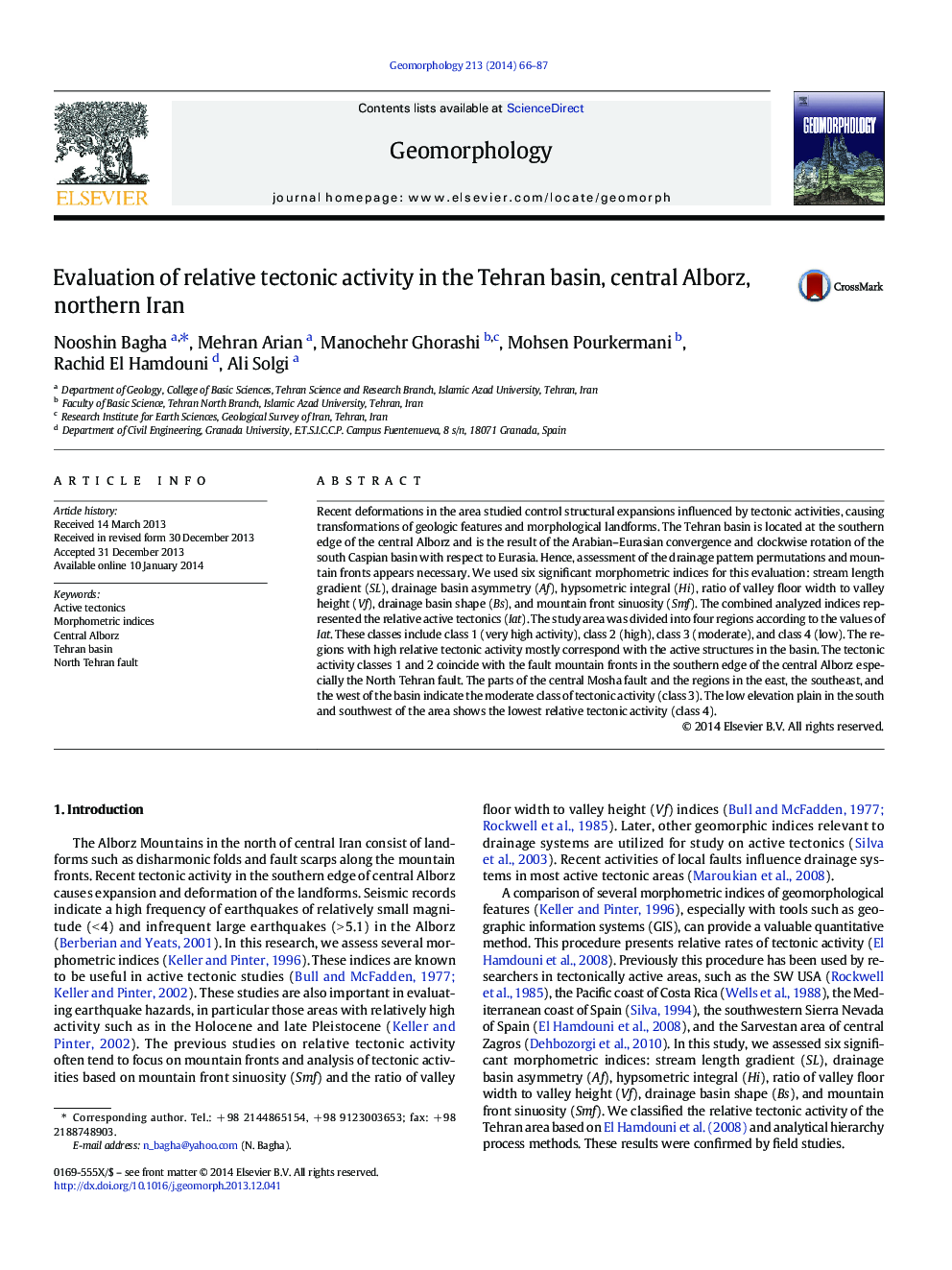| Article ID | Journal | Published Year | Pages | File Type |
|---|---|---|---|---|
| 6432489 | Geomorphology | 2014 | 22 Pages |
Recent deformations in the area studied control structural expansions influenced by tectonic activities, causing transformations of geologic features and morphological landforms. The Tehran basin is located at the southern edge of the central Alborz and is the result of the Arabian-Eurasian convergence and clockwise rotation of the south Caspian basin with respect to Eurasia. Hence, assessment of the drainage pattern permutations and mountain fronts appears necessary. We used six significant morphometric indices for this evaluation: stream length gradient (SL), drainage basin asymmetry (Af), hypsometric integral (Hi), ratio of valley floor width to valley height (Vf), drainage basin shape (Bs), and mountain front sinuosity (Smf). The combined analyzed indices represented the relative active tectonics (Iat). The study area was divided into four regions according to the values of Iat. These classes include class 1 (very high activity), class 2 (high), class 3 (moderate), and class 4 (low). The regions with high relative tectonic activity mostly correspond with the active structures in the basin. The tectonic activity classes 1 and 2 coincide with the fault mountain fronts in the southern edge of the central Alborz especially the North Tehran fault. The parts of the central Mosha fault and the regions in the east, the southeast, and the west of the basin indicate the moderate class of tectonic activity (class 3). The low elevation plain in the south and southwest of the area shows the lowest relative tectonic activity (class 4).
